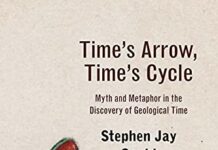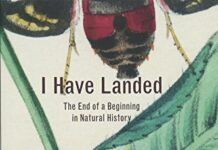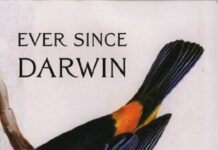
Ebook Info
- Published: 2011
- Number of pages: 256 pages
- Format: EPUB
- File Size: 2.04 MB
- Authors: Stephen Jay Gould
Description
People of good will wish to see science and religion at peace. . . . I do not see how science and religion could be unified, or even synthesized, under any common scheme of explanation or analysis; but I also do not understand why the two enterprises should experience any conflict. So states internationally renowned evolutionist and bestselling author Stephen Jay Gould in the simple yet profound thesis of his brilliant new book.Writing with bracing intelligence and elegant clarity, Gould sheds new light on a dilemma that has plagued thinking people since the Renaissance. Instead of choosing between science and religion, Gould asks, why not opt for a golden mean that accords dignity and distinction to each realm?At the heart of Gould’s penetrating argument is a lucid, contemporary principle he calls NOMA (for nonoverlapping magisteria)–a “blessedly simple and entirely conventional resolution” that allows science and religion to coexist peacefully in a position of respectful noninterference. Science defines the natural world; religion, our moral world, in recognition of their separate spheres of influence.In elaborating and exploring this thought-provoking concept, Gould delves into the history of science, sketching affecting portraits of scientists and moral leaders wrestling with matters of faith and reason. Stories of seminal figures such as Galileo, Darwin, and Thomas Henry Huxley make vivid his argument that individuals and cultures must cultivate both a life of the spirit and a life of rational inquiry in order to experience the fullness of being human.In his bestselling books Wonderful Life, The Mismeasure of Man, and Questioning the Millennium, Gould has written on the abundance of marvels in human history and the natural world. In Rocks of Ages, Gould’s passionate humanism, ethical discernment, and erudition are fused to create a dazzling gem of contemporary cultural philosophy. As the world’s preeminent Darwinian theorist writes, “I believe, with all my heart, in a respectful, even loving concordat between . . . science and religion.”
User’s Reviews
Reviews from Amazon users which were colected at the time this book was published on the website:
⭐This is typical Gould: direct and forcefully written, with the basic thesis of NOMA (Non-Overlapping MAgisteria, which means that religion and science need to stay out of each other’s areas of expertise) clearly stated, well-developed, and defended in many interesting, persuasive, and original ways. His examples are well-chosen, both those illustrating applications and violations of NOMA.The main targets of his argument are those who persist in imposing religious solutions on scientific questions, though scientists who trespass into areas best served by religion get their share of scolding as well. Gould never descends to invective or ridicule, rather treating his opponents “more in sorrow than in anger.” The result is a broadly generous, warm, and highly persuasive work.I do not think the creationists will be won over, simply because the whole idea of a subject area into which religion should not venture is foreign to their way of thinking. But Gould’s target audience is not the convinced creationist but rather the interested but unconvinced layperson trying to figure out the issues.Those looking for originality of concept will not find it here. As Gould says many times in the book, nothing here is a new idea, though Gould’s examples and illustrations are often novel. This is instead a summary and clarification of ideas long taught by thoughtful people in both magisteria, science and religion.
⭐In this landmark work, Dr. Stephen Jay Gould offers a framework in which one may consider the relationship between science and religion. His thesis is that both subjects fall within NOMA (non overlapping magisteria) and only properly comment upon things within their own bailiwicks. Science and religion aren’t even the only two categories of NOMA disciplines. Science is the domain of factual truths and religion, moral truths. Science tells us what we’re made of and religion tells us what we mean. NOMA isn’t an invention; it’s an orthdox (if you’ll pardon the term) way of looking at science and religion that’s been held by many of the world’s greatest thinkers for millenia. (I recall that Gustave Le Bon, a 19th century anti-religionist, correctly observed that science never promised to make us happy. Many great early Jewish and Christian thinkers recognized the creation narratives in Genesis as allegory.) While I can’t claim to be a great thinker, NOMA sketches out a structure that I’ve for decades believed existed, but never attempted to systematize.Gould provides such a structure and also a geneology for NOMA-type thinking. He also describes some of the problems that occur when disciplines step outside of NOMA. It’s pretty well-known the errors that can arise when religion tries to become a science (intellectual repression, factual error), but Gould, an irenic non-religious scientist and famous Darwinist, also demonstrates the dangers of science as religion (eugenics, historical justifications for violence). One of the most interesting and intellectually honest parts of the book is Gould’s retelling of the Scopes controversy of the early 20th century and his apologia (sort of) pro Bryant who’s normally cast as an ignoramus. Gould shows Bryant as a man who was progressive througout most of his life and made some terrible logical and NOMAic errors with regard to Darwinism probably because he was blinded by what he saw as real, understandable dangers – particularly in his time – stemming from hyper-Darwinian thinking. Finally, Gould demonstrates at the end of the book that nature cannot be relied upon for providing moral models; that’s up to us.Gould has been criticized since the publication of this book (1999) by folks like Richard Dawkins for either not actually believing NOMA or for failing to take into account scientific belief systems. Since Gould passed in 2002 he’s not able to directly respond to those criticisms. But I believe the text stands and is vindicated by history and reasonable thinking, and that NOMA accurately describes and limits “rocks of ages.” There’s no sensible way for science and religion to become bedfellows, but NOMA provides a protocol for arguing at the dinner table. This is easily one of the best 50 books I’ve ever read. In a year or two after more reflection I may bump it up some. This is required reading for those involved in the science-religion discussion.
⭐In Rocks of Ages, Gould defends his famous (or infamous, in the eyes of critics such as Richard Dawkins) NOMA (non-overlapping magisteria) thesis. Weary of the what he sees as a fruitless and unnecessary battle between science and religion, Gould argues that the two are separate “magisteria” or authorities which don’t clash because they concern themselves with two distinct realms. Science, says Gould, is concerned with facts, and religion with values. The boundaries of the two run up against one another, and in fact frequently “interdigitate,” but nonetheless remain distinct.Dawkins, in his typically arrogant way, claims that Gould must’ve been insane when writing this little book (see Dawkins’ God Delusion). One needn’t sympathize with this outrageous accusation to admit that Gould’s thesis is troublesome. It’s not clear, for example, how to understand the logical or ontological status of magisteria. At times, Gould writes as if they’re something like Wittgenstein’s language games. But surely he doesn’t want to say this. Gould is, if anything, a realist. Moreover, it would appear that he’s using “religion” in such a broad sense as to sap it of meaning. Religion does deal with values, but it’s more than that. Apparently, though, Gould doesn’t want it to be much more than that, because he clearly has no use for miracles (p. 89 ff). At the same time, he seems to suggest that value judgments are subjective, thereby rendering the religious realm even more vague. Finally, it’s not at all clear (at least to me) that the boundaries between the scientific and the religious are as crisp (even if they do “interdigitate”) as Gould claims. A better metaphor to me seems to be that the boundaries ooze into one another in the way that wetlands ooze into dry ground. Facts inform moral decisions; values influence the way we read facts.So Gould’s NOMA thesis, I believe, is unconvincing, at least as defended in Rocks of Ages (a book which is unusually sloppy for Gould). But along the way, Gould introduces the reader to several interesting asides: for example, the free thought of Francis William Newman, Cardinal Newman’s brother; the incredibly poignant and courageous letter written by Thomas Henry Huxley to Charles Kingsley on the occasion of the death of the former’s young son; and the “progressive” reasons for William Jenning Bryan’s objections to Darwinism.Readers may want to explore John Haught’s “overlapping layers of meaning” thesis, which seems to me a much more successful attempt to mediate the religion/science warfare. See his Is Nature Enough? and Darwin’s God.
⭐For Stephen Jay Gould, “the supposed conflict between science and religion” is a debate that “exists only in people’s minds and social practices” and this book presents his own “blessedly simple and entirely conventional resolution” to the problem. We might wonder where else debates are supposed to exist if not “in people’s minds and social practices” and we might ask, if there’s no problem, why is he offering a solution? Nevertheless, Gould presses on with his principle of non-overlapping magisteria (NOMA), which are domains occupied by science (“the empirical realm”) and religion (“questions of ultimate meaning and moral value”). Crucially, according to Gould, “these magisteria do not overlap” and so scientists and theologians can tackle their respective workloads in peace, without worrying whether they’re trespassing in the other’s territory.Gould’s segregation of science and religion is not misguided because there are no differences between science and religion (there are very many differences). NOMA is mistaken because it fails to identify the boundaries that matter, and it misleads because it implies a parity between science and religion that is unwarranted.Rare is the religion devoid of any providential scheme: assertions concerning the actions of supernatural beings are integral to many belief systems (think how common is the phrase “their prayers were answered”). As rare is the scientist who even claims to have evidence for divine intervention in the physical world. If religion contains a scrap of ontological truth, this should be discoverable by the scientific method (“the most reliable tool humanity has yet developed for distinguishing truth from falsehood” – Mark Henderson in
⭐The Geek Manifesto: Why Science Matters
⭐). Science, in the few short centuries of its modern career, has not only not confirmed the truth claims of any religion, it has disconfirmed countless such beliefs.Gould holds up one such disconfirmation as an example of NOMA in action: those who believe that the earth is ten thousand years old “stand in violation of NOMA” because they have imposed “a dogmatic and idiosyncratic reading of a text upon a factual issue lying within the magisterium of science.” Gould doesn’t mince his words, but the impression that he is taking a fearless stand is just that, for he is silent on a rather more critical point. Do all Christians also “stand in violation of NOMA”? They all dogmatically believe that Jesus died and rose from the dead, despite this being a purely empirical question that lies “within the magisterium of science.”This example actually illustrates the weakness of NOMA, which is a static principle that doesn’t account for changes over time. Creationism could never have been refuted if scientists two centuries ago had all abided by NOMA. Science stands still if its boundaries are fixed. It must be free to explore the unknown, to challenge and overturn ancient beliefs, to convert settled doctrine into the idiosyncratic ravings of cranks.The idea of a single, fixed boundary containing religion is also misleading. For Gould, “science gets the age of rocks, and religion the rock of ages; science studies how the heavens go, religion how to go to heaven.” The apparent symmetry is shattered as soon as we recognize that religion, far from being a monolithic occupier of a single magisterium, comprises competing and contradictory systems of belief. While the heavens, meaning the sun and moon and the stars beyond, certainly do exist, the nature of heaven and its inhabitants is hardly uncontested, especially by the religious. All believers doubt the existence of the gods of rival faiths, and even within a single faith tradition there is often bitter disagreement over precisely how believers are supposed to get to heaven. The kind of consensus found in science is absent in religion, which is divided into tribal territories marked out by multiple boundaries.Gould is confused when it comes to moral philosophy. Although he doesn’t identify ethics with religion (atheists, he concedes, are not devoid of morality) he does insist that religion is the “magisterium of ethical discussion and search for meaning.” What the many non-religious moral philosophers think of this grandiose claim is left unexplored. Gould also ignores the growing understanding that questions about values – about meaning, morality and life’s larger purposes – are really questions about well-being of conscious creatures, and that values translate into facts that can be scientifically understood (as Sam Harris argues in
⭐The Moral Landscape
⭐).A more helpful way than NOMA of understanding what separates science and religion is provided by E. O. Wilson (
⭐Consilience: The Unity of Knowledge
⭐), who contrasts transcendentalism with empiricism. Wilson recognizes the appeal of transcendental thinking not just to religious believers but also to countless scholars in the social sciences and humanities who choose “to insulate their thinking from the natural sciences.” Like Harris, Wilson doesn’t think we should put moral reasoning in a special category, and use transcendental premises, “because the posing of the naturalistic fallacy is itself a fallacy.”One danger of Gould’s approach lies in the confidence with which he presents his case, whose attractive simplicity is bought at the expense of a more nuanced appreciation of the history and functioning of both science and religion. Towards the end of the book, he rightly describes “superstition, irrationalism, philistinism, ignorance [and] dogma” as “insults to the human intellect” and then asserts that “this enemy” should not be called “religion.” For an essayist who was much admired during his lifetime, for a thinker who liked to pontificate on the “ultimate meaning” of things (itself a logical non-starter), he seems to have had trouble with the meanings of several common words.Gould is right to identify that there are two non-overlapping domains, but wrong to identify these with science and religion. In one sense, his whole book is a question-begging exercise affirming transcendentalism: by assuming a world beyond the natural that contains these mysterious things called values and meanings, and by assuming that science is confined to the study of the natural, Gould can conclude that “science has no business” in areas such as morality. Even if all that were true, it doesn’t explain why religion is any better qualified to access this area. For some reason Gould is committed to the segregation of science and religion and to the idea of their compatibility. In the end he is a theologian’s wet dream: a non-believer who credits them with a worthwhile profession.(Some books that have informed this review: see
⭐Public Knowledge: An Essay Concerning the Social Dimension of Science
⭐for the rational consensus typical of science; see
⭐The Outsider Test for Faith: How to Know Which Religion Is True
⭐for the difficulties of achieving such consensus within religion because of the arbitrary character of beliefs grounded in faith; on how Christianity was the first religion to become firmly rooted in truth claims, see
⭐Forged: Writing in the Name of God – Why the Bible’s Authors Are Not Who We Think They Are
⭐; on the use of protective strategies within religion, see
⭐Religious Experience
⭐; on the long warfare of science with theology in Christendom, see
⭐A History of the Warfare of Science with Theology in Christendom
⭐; on religion as superstition, see
⭐Superstition: Belief in the Age of Science
⭐.)
⭐Just what I needed and in excellent condition.
⭐Stephen Gould intends to prove that there is no conflict between Science and Religion. However, he does this defining the proper domain (or magisterium, as he puts it) of religion effectively as that which does not conflict with science.Particularly, he muddles into one ball ethics (how one should behave, then meaning of “right and wrong”) and religion (the belief in a god or gods, the god’s actions, commandments etc.) It is true that science does has nothing to say about ethics, and that many people derive their ethical systems from their belief in their god. But this does not imply the reverse logic that, if science has no conflict with ethics, it has no conflict with the belief systems that inspire that conflict. Science does not havce anything to say about the ethics of (say) abortion, but it does show by observation that no god sends lightning to strike down abortionists.The book is written in SJG’s usual readable, albeit wordy, style. However, do not expect great enlightenment from it.
⭐If you’ve read any of the clutter of recent books on evolutionary science or popular atheism, you’ll know that Stephen Jay Gould – and particularly this book, Rocks of Ages comes with something of a health warning: Gould, despite great eminence and magisterial publishing history, is seen by a certain clique of like-minded authors within the biological community as being damaged goods and this attempt at popular philosophy, with its central thesis of “Non-Overlapping Magisteria” (“NOMA”) – an attempt at peaceful mediation between science and religion – is given short shrift by such authors, and elsewhere tends to be put down to Gould’s compromised situation when he wrote it (terminally ill with cancer). Since his death a few years ago, Rocks of Ages has lost an able champion and as a result looks set to disappear quietly beneath the waves of the current, squally debate.Which is a pity. While I didn’t find Gould’s particular formulation entirely convincing, his starting point: that it would be a great shame if neither of the two greatest intellectual traditions on the planet could rest without destroying the other, seems to me to be thoroughly pragmatic and worthwhile, since each has an awful lot of merit and utlity if only they could agree a means of peacable separation.The likes of Dawkins, Harris and Hitchens, of course, will have none of that, and while the great majority of the liberal religious happily would, this only furthers the militant atheists’ conclusion that they are therefore right, and the god-botherers must be crushed. Very childish indeed, if you ask me. For the record, I’m not religious myself: just more pleasantly disposed to religious people than some of my atheist confreres.All the same, I’m not persuaded by NOMA, because, like all the participants in that pointless debate, Gould believes he can hold onto transcendental truth, and is therefore hoist by the same petard: using NOMA simply as a means of deciding which truth is the province of which discipline is as forlorn as the forensic search for any kind of transcendental truth, and worthy of the same criticisms that Rorty, Kuhn, Wittgenstein and others make of that idea.But enough of what I think. NOMA is, at least, a good try and along the way Gould has written an elegantly phrased, beautifully learned, contemplative, reflective book and made some very pithy observations, that Richard Dawkins might have done well to note.In particular, the observation that hardly any of the modern religions take young-earth creationism literally. Once it is seen as metaphorical (and this may be heresy in the deep south, but it’s been taken as read in all of the churches I’ve ever been to), the atheistic thrust of Darwin’s Dangerous Idea (a wonderful book in other respects) comes to nought. Gould notes that it can only be taken figuratively, if for no other reason than that it makes no sense whatsoever otherwise: the literal text refers to the making of the sun on the fourth “day” – but it’s difficult to see how days 1-3 could have been measured! Additionally, pretty much the only place where religion strays more than nonchalantly into the scientific magisterium (certainly the only one you’ll find Dawkins obsessing about, since it is his chosen field) is in the creation myth, which as far as I know is over and done with in about ten pages, which leaves much of the balance of the Good Book unscathed.Erudition of Gould’s sort (absent without official leave in the The God Delusion) lives on every page, and the book is worth its value for these alone. The myth of the flat earthers is similarly surprising: read it and see.Lastly, I found Gould’s book valuable because it faces up to and accomodates what, for fundamentalists (of either stripe) is a rather uncomfortable fact: there are millions, if not billions, of thoughtful, well educated, scientifically literate, liberal people who are able to hold to religious devotion and scientific practice contemporaneously, without unease or mental torment. Dawkin’s best guess is that these people are systematically deluded: hardly a useful or scientific approach, you would think. Gould’s more mature reaction is to say: these are the facts: science has not supplanted religion; these ideas can co-exist in our heads; now how can we reconcile that.There are better explanations, I believe, of the particulars, but Gould’s book is a worthwhile and charming entry all the same.Olly Buxton
⭐Very interesting
Keywords
Free Download Rocks of Ages: Science and Religion in the Fullness of Life in EPUB format
Rocks of Ages: Science and Religion in the Fullness of Life EPUB Free Download
Download Rocks of Ages: Science and Religion in the Fullness of Life 2011 EPUB Free
Rocks of Ages: Science and Religion in the Fullness of Life 2011 EPUB Free Download
Download Rocks of Ages: Science and Religion in the Fullness of Life EPUB
Free Download Ebook Rocks of Ages: Science and Religion in the Fullness of Life





